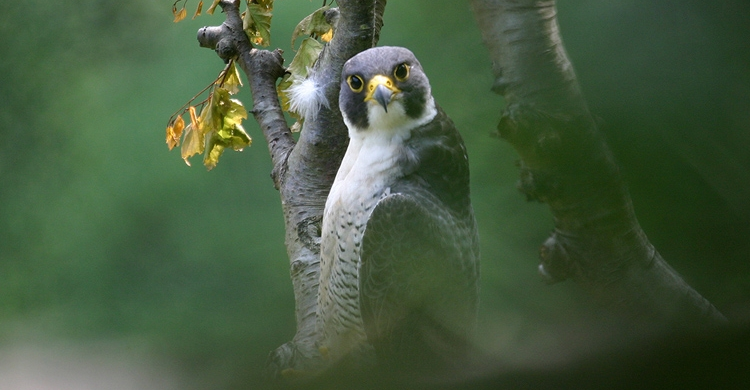Linking Continents – the Migration of Raptors

Peregrine Falcon @ Andras Kovacs
Loch Lomond, September 2007 - International Meeting to Fight Decline of Birds of Prey Planned for October 2007.
As autumn comes to northern Asia and Europe, millions of birds are moving to warmer areas in southern Asia and Africa. By this age-old strategy, they are avoiding the difficulty of finding food in the northern winter. The migration, however, brings its own challenges. As well as the natural hazards of unpredictable weather, high mountain ranges to pass over and seas and deserts to cross, migrating birds must now cope with rapidly growing human-induced pressures that range from habitat loss to poisoning, and from unsustainable hunting to collision with manmade structures.
Among the millions of migrants are significant numbers of birds of prey and owls, collectively known as raptors. The people through whose lands they pass often regard them as magnificent and powerful birds. In fact, they are particularly sensitive. Because they are at the top of their food chains, they concentrate any poisons that have been eaten by their prey. What may not be enough insecticide to kill individual sparrows can certainly kill the sparrowhawk. Mice that are weakened by rodenticides are easier to catch, and they poison the owls that catch them. Even in flight, birds are not safe. Although raptors do not make good food, they are often killed for sport, or for taxidermy; and they are frequently killed by those who consider them a threat to game birds. This killing is very difficult to stop, even where it is strictly illegal.
The news is not all bad. Some damaging pesticides have been extensively banned, and birds of prey, such as the Peregrine Falcon, have benefited and returned to historic population levels in many parts of their range. Power poles in several European countries, such as Germany, have been redesigned to prevent birds that perch on them being electrocuted. Where persecution is no longer widespread, birds of prey have been reintroduced successfully, as with White-tailed Eagles, Red Kites and Ospreys in the United Kingdom.
It will be in the UK that delegates from 50 countries will meet this autumn. In Scotland, home to many birds of prey, scientists and nature conservation administrators will meet in October to explore how nations can cooperate more effectively to conserve these extraordinary birds. The birds of prey and owls now on the move south cannot know it, but plans are being laid to ensure that their migrations will go on for millennia to come.
Last updated on 04 October 2019
Type:
News
Species group:
Birds


